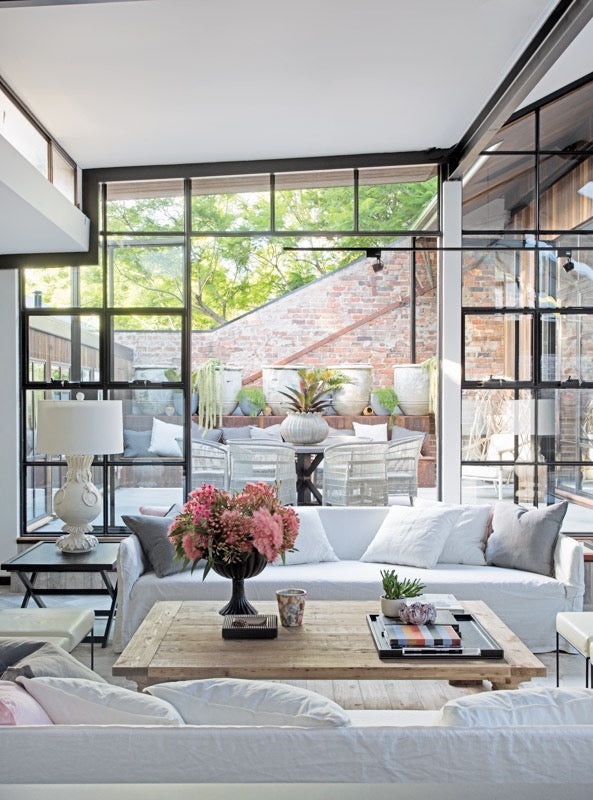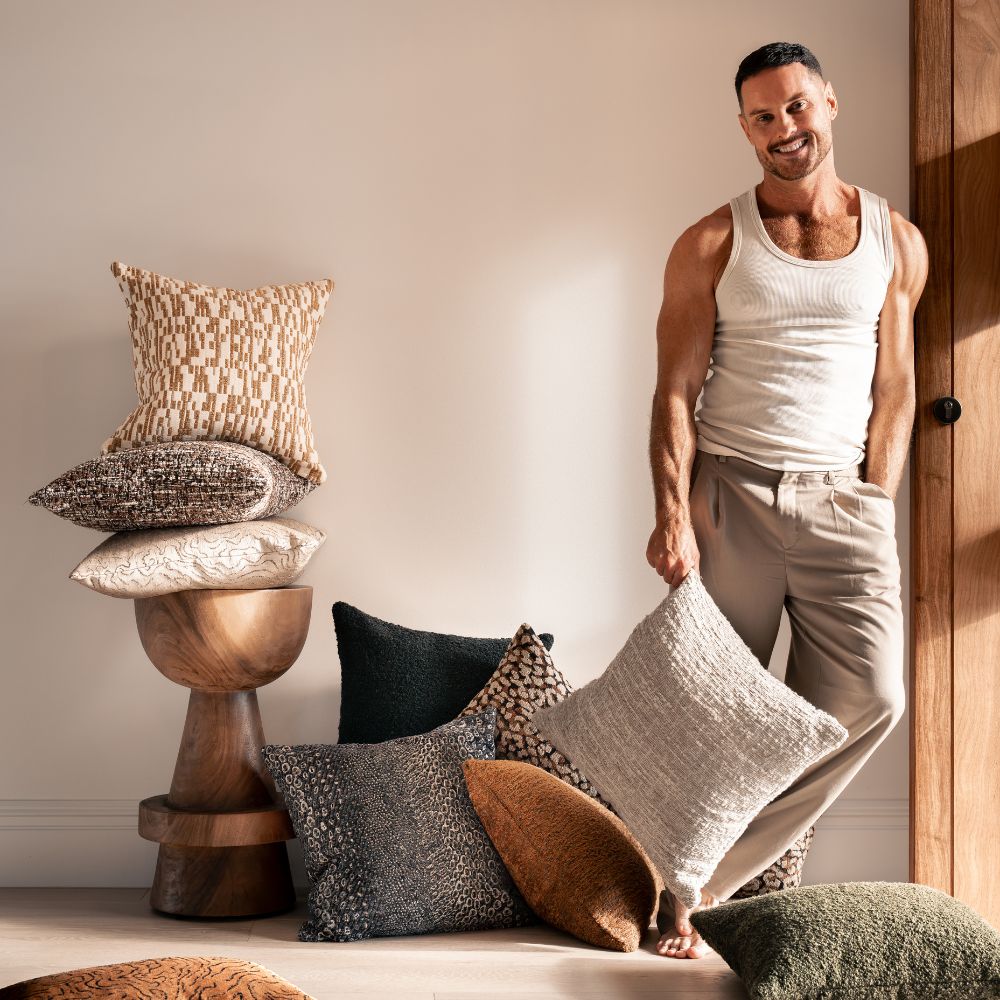Block judge Darren Palmer’s top tips and tricks for your home

Darren Palmer's new book HomeSpace addresses real life interior design for the not-so-nuclear modern family.
As interior designer to the stars, a judge on Channel 9’s The Block, and contributor to a wealth of publications on the topic – what Darren Palmer doesn’t know about designing a home probably doesn’t bear reading about.
His first book Easy Luxury with its uncomplicated and jargon free approach proved a hit with readers – so he is back with a second book, HomeSpace.
In HomeSpace, Darren shares his insights on our relationship with our living spaces, and offers a variety of approaches to turn a house into something much more personal.

Your first book, Easy Luxury, “de-complicated” the design process to make it accessible to anyone on any budget and on any scale. What doesHomeSpace offer new readers, and also those who read your first book?
I wanted to lay down the foundations of good design so people could understand what made good spaces work and how they could interpret good design principals for themselves in their own homes. What I wanted to achieve with HomeSpace was to show that process in different types of houses.
Avoid slavish replication of trends as much as possible but look for the things that are current and speak to your own sense of style and integrate those in ways that you’re comfortable with.Darren Palmer
People think there must be a style or trend for them, and the way that other people do it must be the way they should do it too, but my version of the truth is that people influence their outcome so no two projects or results should ever be the same.
The cookie cutter approach to design is fine if you want to colour by numbers, but if you want to create a home that fits you and yours you need to understand how your desires, your needs, your location and your family all influence the “ideal” home for you.
In HomeSpace I wanted to show the end result, the thought process behind it – what the family needed and how we adapted the common elements of design … to change the space they have into the homes they love.

Why is having a well-designed home important?
From a functional point of view, you want your home to stand up to and thrive with the demands you place on it. There’s no fun in constantly berating your loved ones to keep everything clean if you have a heavy traffic household.
You’re better off, and everyone around you is too, to design for the constraints you have so that you can clean things easily and replace or repair what gets damaged if that’s your life … You can have delicate or fragile things if you have a thoroughly adult house but it’s through design that you satisfy the demands of your household. Design is the answer to order, to cleanliness, to satisfaction and happiness in a home.
There’s a lot to be said for coming home to a place that reflects you and what affect that has on your mental wellbeing. There’s also a strong case for the feeling of prosperity people have in their homes and how that affects their general wellbeing in working and interpersonal relationships.

To those who are feeling overwhelmed by the process of redecorating, renovating or designing a new home from scratch – what is the best way to start?
Start with a brief. Consider all stakeholders – kids, partner, family and even pets – and think about what they all need to live well and be at home in the space.
Then, think about how you want to feel when you arrive home, when you are at home and how you want your guests or family to feel too. That mood will inform a palette of colours, materials and inclusions. Defining your brief will give you some parameters to operate within.
Then you need to gather some visual reference so you have a written document and a visual “scrapbook” to refer to when you’re making design decisions.
With this approach you have a road map to keep you headed on the right path: without this approach you run the risk of getting hopelessly lost along the way.

How can people navigate trends, and avoid creating a home that looks “date stamped”?
Avoid slavish replication of trends as much as possible but look for the things that are current and speak to your own sense of style and integrate those in ways that you’re comfortable with.
If you are a cautious decorator then look at updating just your soft furnishings and decor with trend-driven things. If you’re more adventurous, you can upscale the trend-driven pieces to furniture but the most important thing is to have an overview of what your home is going to look like complete and not just buy things on a whim and hope for the best. This approach almost always ends with an inconsistent result.
But to get back to your question, it doesn’t matter if your home is date stamped if your home is just for you and you’re going to live there for the next 10 years. If you are selling a home in the near future though you need to be more considerate of how others may perceive it, so thinking about things like location, potential buyers and their desires is more important. In that instance do your research and find out what people want and will pay for and then skew your design toward it. If that means integrating things from trends to satisfy a particular market it would be remiss not to.

In HomeSpace you say how the notion of the “nuclear family” is less relevant today, and this influences contemporary design. How is this manifesting?
In my experience the nuclear family is not the norm any more.
There are so many permeations of family life, from single mums or dads to gay married ones, married couples with kids or with none. There isn’t a family unit we call “nuclear” anymore, and everyone seems to run their own lives in their own way with their own places of habitation reflecting their lives, families and styles.
The comment I make about the nuclear family though is more in reference to my own childhood and how that contrasts to my adulthood and my understanding of how everyone lives. That childish idea I held that everyone must live just like me is long gone because I’ve lived, I’ve travelled and I’ve experienced enough to understand variety is the spice of life and the things that make people, and by extension families, unique is the thing that makes them special.

You are immersed in design from all angles – your own client design work, your expertise on television shows devoted to the subject, editorial and your books. But what is your own decorating style? Can it get confusing with so much diverse inspiration at your fingertips?
Not at all. My style is intrinsic so I’m not confused by what other people are doing or what’s happening outside of my sphere. I see things, I like things and I even take new ideas on board but I’m not looking at what others are doing or desiring for my motivation or inspiration so I don’t get confused at all.
In HomeSpace you’ll see a super modern architectural home, a Balinese luxury resort style home, a sweet Spanish mission apartment with a new traditional interior, a federation house with shaker style detailing and an industrial warehouse. They’re all different and have different results and styles but you can see there’s a common language between them all because that’s my aesthetic.
It’s not confined to one style so I don’t exclude things to keep my style “pure” … I appreciate lots of different designers and styles and can even adjust my style to suit different approaches and settings but my aesthetic stays the same, using the same principals getting different results for different types of spaces.
It’s the same for me personally, I have had several different types of homes in different locations and they have all had different results, different schemes and materials palettes and all of them are as appropriate to me and my desires at the time as they have been to the structures and suburbs in which they’re located.
When you understand the design process, how fundamentals don’t change but briefs do … you don’t have to worry about trends or themes, you just do what is right. That’s what my books are both about and I hope everyone who has read and learnt from Easy Luxury gets as much out of HomeSpace.
Article by Amber Creswell for domain.com.au








Leave a comment